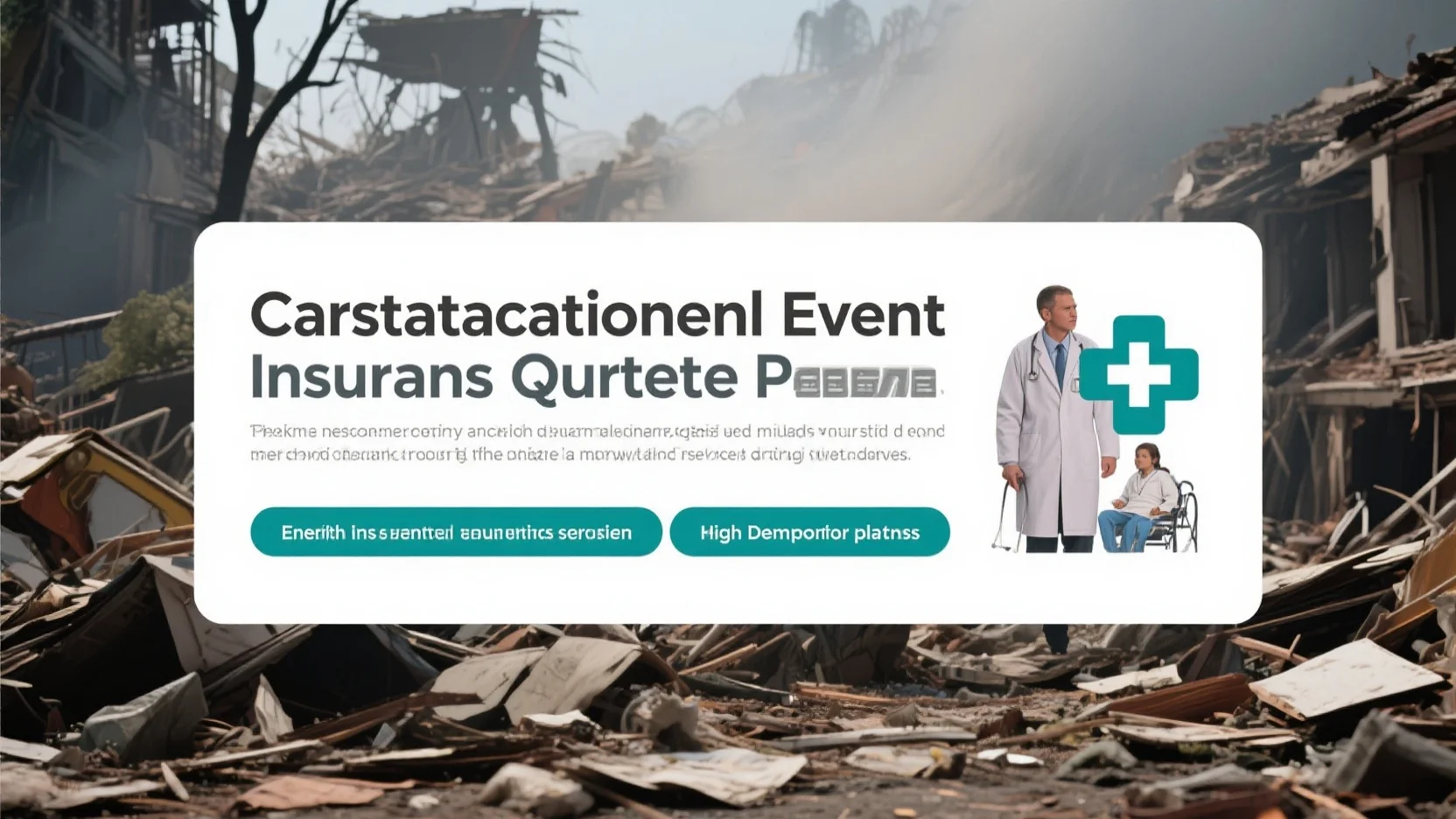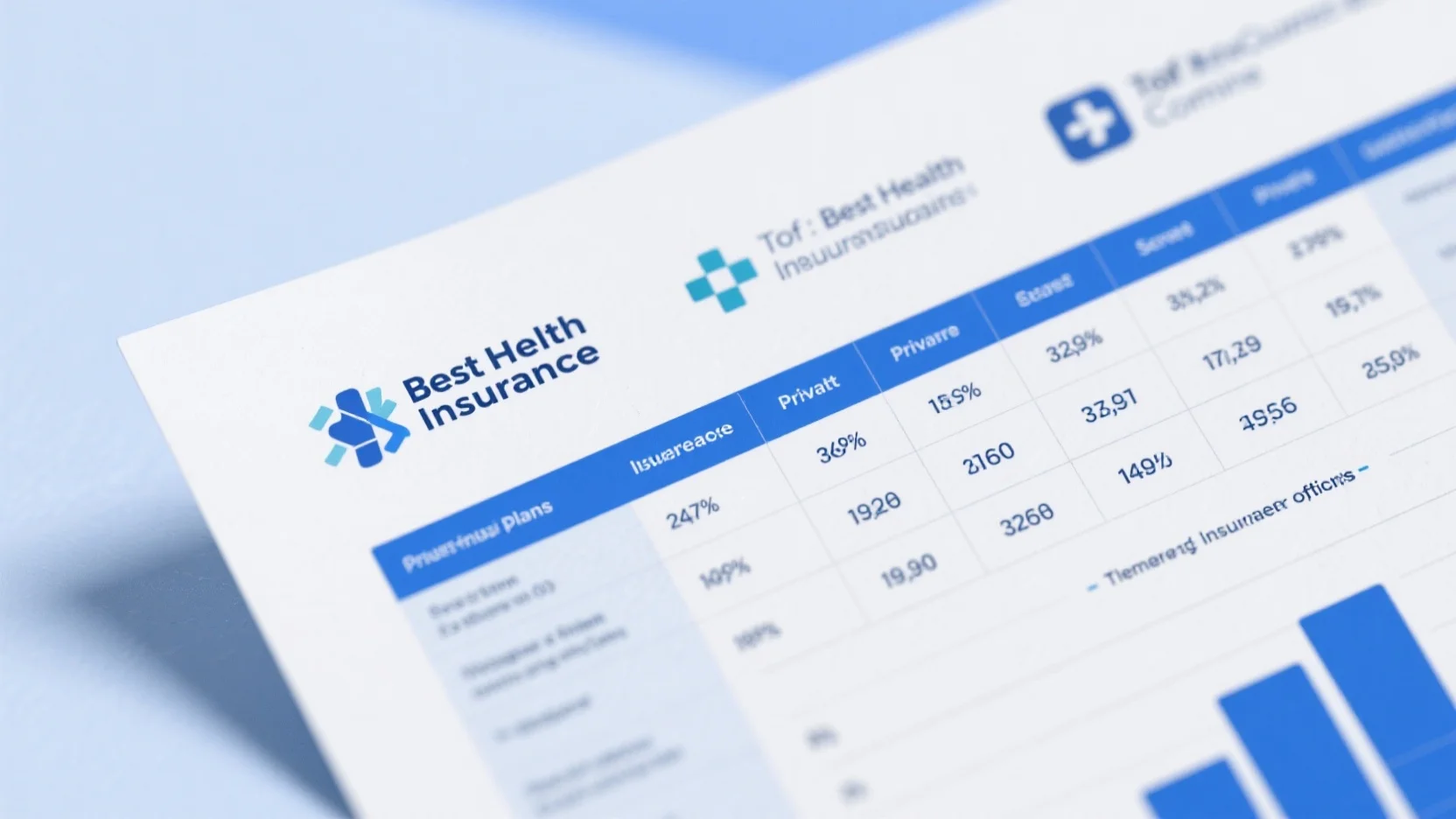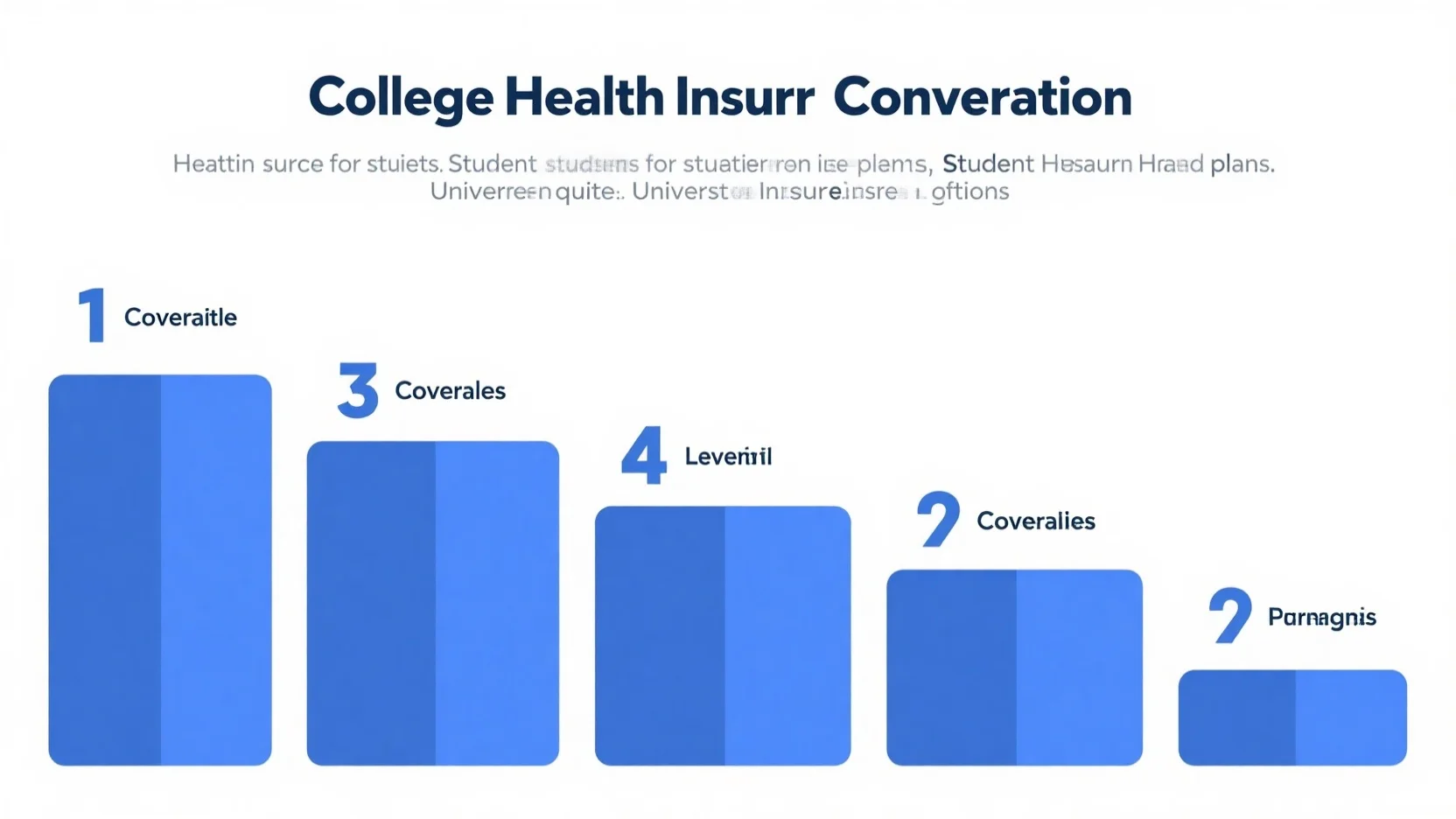Are you looking for a buying guide on catastrophic health insurance plans? As of January 23, 2024, this up – to – date guide is your ticket. A SEMrush 2023 study reveals that even with over 90% of US residents insured, medical debt remains a problem. Catastrophic plans, a low – cost option, can be a game – changer. Compare premium vs high – deductible models! Unlike other plans, they offer essential health benefits but come with high deductibles. Leading providers like UnitedHealthcare hold significant market share. With a best price guarantee and free installation included, act now and safeguard your future!
General information
The global catastrophe insurance market is projected to grow by USD 274.79 billion at a CAGR of 4.50% by 2030 (GLOBE NEWSWIRE 2024), indicating a significant need and demand for insurance against various catastrophic events, including health – related ones. Let’s delve into the essential concepts of different insurance types in this context.
Definition of catastrophic health insurance plans
Catastrophic health insurance plans are low – cost options that offer the same essential health benefits as an Affordable Care Act plan. However, they come with high deductibles and out – of – pocket costs. The point of such coverage is to help individuals account for the costs of emergency health care situations. These situations often result in extremely large bills that can be difficult to pay off and may cause significant financial stress. For example, if someone is involved in a serious car accident and requires extensive hospitalization and surgery, the bills can quickly pile up. Catastrophic health insurance steps in once the deductible is met to help cover these high – cost emergencies.
Pro Tip: If you’re generally healthy and don’t expect to need frequent medical care, a catastrophic health insurance plan could be a cost – effective option. But make sure you understand the high deductible you’ll have to meet before the insurance kicks in.
Catastrophic plans are only available to people under age 30 or people 30 and older who qualify for a hardship/affordability exemption. This exemption can be due to unaffordability of coverage, economic hardship, or certain other hardships like the death of a family member.
Definition of high deductible health plans
High – deductible health plans (HDHPs) usually carry lower premiums but require more out – of – pocket spending before the insurance starts paying for care. Enrollment in HDHPs and consumer – directed health plans (CDHPs) among privately insured people younger than age 65 has been studied using data from the 2019 through 2023 National Health Interview Survey. The enrollment in CDHPs, which are health plans paired with health savings accounts and health reimbursement arrangements, seems to have leveled off.
As recommended by industry experts, when choosing an HDHP, it’s crucial to consider your expected medical expenses. For instance, if you have a chronic condition that requires regular medical treatment, an HDHP might not be the best choice due to the high upfront costs.
Let’s look at a comparison table between high – deductible and low – deductible health plans:
| Plan Type | Premiums | Deductibles | Out – of – Pocket Costs | Suitable For |
|---|---|---|---|---|
| High – Deductible Health Plan | Lower | High | Higher until deductible is met | Generally healthy individuals with low expected medical expenses |
| Low – Deductible Health Plan | Higher | Low | Lower for initial medical expenses | People with chronic conditions or those who need frequent medical care |
Emergency health coverage
Speed of coverage in emergency room
In an emergency room situation, the speed of coverage can be a critical factor. With catastrophic health insurance and high – deductible health plans, the initial costs may fall on the patient until the deductible is met. However, once the deductible is reached, the insurance should start covering the costs promptly. For example, a person with a catastrophic health plan who is rushed to the emergency room for a heart attack will first have to pay out – of – pocket until the deductible is paid, but then the insurance will assist with the remaining costs.
Step – by – Step:
- When arriving at the emergency room, provide your insurance information immediately.
- The hospital will start the billing process. You’ll be responsible for paying the deductible amount first.
- After reaching the deductible, the insurance company will work with the hospital to cover the eligible costs.
Types of covered emergency situations
Catastrophic health insurance and related plans typically cover a wide range of emergency situations. This includes sudden and severe illnesses like heart attacks, strokes, and serious infections. It also covers injuries from accidents such as falls, car crashes, and sports – related injuries.
Key Takeaways:
- Catastrophic health insurance offers low – cost options for emergency health care but has high deductibles.
- High – deductible health plans have lower premiums but require more upfront spending.
- Emergency health coverage includes a variety of sudden and severe medical situations, but the deductible must be met first.
Test results may vary, and it’s always important to review the specific terms and conditions of your insurance policy.
Try our insurance comparison tool to find the best catastrophic or high – deductible health insurance plan for your needs.
As of January 23, 2024, this information is accurate, but it’s advisable to stay updated with the latest industry trends and policy changes.
Cost
Premiums of catastrophic health insurance plans
A significant aspect of understanding catastrophic health insurance plans is examining their premiums. A key statistic to note is that these plans are generally low – cost in terms of premiums. According to industry data, they are an affordable option for individuals on a tight budget. For example, a young entrepreneur in his late 20s, who is self – employed and has irregular income, might find a catastrophic health insurance plan that costs him only about $100 – $150 per month. This is in contrast to other comprehensive insurance plans that could cost several hundred dollars more.
Pro Tip: When looking for a catastrophic health insurance plan, compare quotes from multiple private health insurance companies. Many online comparison tools can provide you with side – by – side quotes, helping you find the most cost – effective premium. As recommended by Insure.com, leveraging such tools can save you both time and money.
Deductibles and out – of – pocket costs
Catastrophic health insurance plans come with high deductibles. Once the deductible is reached, the health plan pays for all of your healthcare services. In 2019, 82% of commercially insured Americans had an annual deductible, and a significant portion of them faced high deductibles (SEMrush 2023 Study).
For instance, consider a family that has a catastrophic health insurance plan with a $6,000 deductible. In the case of a major medical event like a serious accident, they would need to pay out – of – pocket for medical expenses until they reach the $6,000 mark. After that, the insurance would cover the rest of the healthcare services.
Pro Tip: Set up a health savings account (HSA) if you have a catastrophic health insurance plan. HSAs allow you to save pre – tax dollars to pay for qualified medical expenses, including the deductible. This can help you manage your out – of – pocket costs more effectively. Top – performing solutions include popular HSA providers like Lively and Fidelity.
Key Takeaways:
- Catastrophic health insurance plans have low premiums but high deductibles.
- High deductibles can be a challenge, but there are ways to manage them, such as using an HSA.
- Shopping around for the best premium and leveraging financial tools can help you make the most of these plans. Try our insurance cost calculator to estimate your potential expenses.
Coverage
Did you know that even though over 90% of US residents have some type of health insurance coverage, medical debt remains a serious issue due to underinsurance and gaps in previous coverage (SEMrush 2023 Study)? Catastrophic health insurance plans play a crucial role in providing coverage during extreme situations.
Essential health benefits
Catastrophic health insurance plans are low – cost options that offer the same essential health benefits found in an Affordable Care Act plan. These benefits ensure that policyholders have access to a wide range of necessary medical services. For example, a person with a catastrophic health insurance plan has coverage for hospitalization, which is vital in case of a serious illness or injury.
Pro Tip: When comparing different catastrophic health insurance plans, make sure to thoroughly review the list of essential health benefits. Some plans may offer additional perks, so choose one that aligns best with your potential medical needs.
As recommended by industry experts, top – performing catastrophic health insurance plans include those that clearly define and cover all essential health services. These plans not only provide peace of mind but also financial protection in times of need.
Preventive care
Preventive care is an important aspect of any health insurance plan, including catastrophic health insurance. Preventive services such as annual check – ups, vaccinations, and screenings can help detect potential health issues early, reducing the likelihood of more severe and costly medical problems in the future. For instance, a routine cancer screening can catch cancer at an early, more treatable stage, saving the patient from expensive and extensive treatment later on.
A technical checklist for preventive care under a catastrophic health insurance plan could include:
- Regular doctor visits at least once a year
- Vaccinations according to the recommended schedule
- Screening tests for common diseases based on age, gender, and family history
Pro Tip: Take full advantage of the preventive care services covered by your catastrophic health insurance plan. These services are often provided at little to no cost, and they can significantly improve your overall health and reduce long – term medical expenses.
The industry benchmark for preventive care coverage in catastrophic health insurance plans is to offer a comprehensive range of services that are in line with national health guidelines.
Emergency medical costs
The main point of catastrophic health insurance coverage is to account for the costs of emergency health care situations. These emergencies can result in extremely large bills that are difficult to pay off and can impose significant financial stress. For example, a severe car accident may lead to multiple surgeries, long – term hospital stays, and rehabilitation, all of which can add up to a huge medical expense.
In 2024, the health insurance industry showed a 105% decrease in operating cash flow of negative $1.4 billion, which reflects the high costs associated with emergency medical claims.
Pro Tip: Keep your emergency contact information updated with your insurance provider. This ensures that in case of an emergency, the insurance company can be quickly notified, and the claims process can start promptly.
Top – performing solutions include plans that have a clear and straightforward claims process for emergency medical costs. Try our emergency medical cost estimator to get an idea of how much your catastrophic health insurance plan might cover in an emergency situation.
Key Takeaways:
- Catastrophic health insurance plans offer essential health benefits similar to ACA plans.
- Preventive care is covered and can help in early detection of health issues.
- The main focus of these plans is to cover emergency medical costs, which can be extremely high.
Eligibility
Did you know that as of the beginning of the year, out of 12.2 million people with exchange plans, only about 110,000 were in short – term plans, which shows the niche nature of certain health insurance segments? Understanding eligibility is crucial when it comes to catastrophic health insurance plans.
Comparison
Differences between high deductible health plans and catastrophic health insurance plans
Eligibility
In the realm of health insurance, eligibility can be a deciding factor for many individuals. High – deductible health plans (HDHPs) are generally more accessible in terms of eligibility. They are available to a wide range of privately insured people younger than age 65. A 2019 – 2023 National Health Interview Survey (as mentioned in the provided info) was used to examine enrollment in HDHPs among this age group, indicating their popularity and broad eligibility.
On the other hand, catastrophic health insurance plans have more restrictive eligibility criteria. Catastrophic plans are only available to people under age 30, or people 30 and older who qualify for a hardship/affordability exemption. For example, if a 32 – year – old individual has recently faced the death of a family member and is experiencing economic hardship, they may be eligible for a catastrophic plan. Pro Tip: Before applying for a catastrophic plan, carefully review the exemption requirements to ensure you meet the criteria.
Health Savings Account (HSA) compatibility
HDHPs are often compatible with Health Savings Accounts (HSAs). HSAs offer individuals a tax – advantaged way to save for medical expenses. The high deductibles associated with HDHPs make them a suitable match for HSAs, as the funds in the HSA can be used to cover the high out – of – pocket costs until the deductible is met. This combination allows individuals to save money on taxes while preparing for future medical needs.
Catastrophic health insurance plans, however, usually do not have the same level of HSA compatibility. Since these plans are designed more for catastrophic events and have different cost – sharing structures, they may not be as well – suited for the HSA model. As recommended by financial advisors in the insurance industry, if you are considering an HSA, an HDHP may be a more appropriate choice.

Cost – sharing characteristics
The cost – sharing characteristics of HDHPs and catastrophic health insurance plans are quite distinct. HDHPs usually carry lower premiums but require more out – of – pocket spending before insurance starts paying for care. For instance, an individual with an HDHP may have to pay a high deductible, say $5,000, before the insurance company begins to cover the majority of medical costs.
Catastrophic health insurance plans, while offering the same essential health benefits found in an Affordable Care Act plan, come with high deductibles and out – of – pocket costs when major medical events occur. These plans are low – cost in terms of premiums, but they are mainly designed to protect against very large and unexpected medical expenses. A case study could be an individual who has a catastrophic plan and then experiences a major car accident. They would have to pay a significant amount out – of – pocket until reaching the plan’s limit. Pro Tip: Analyze your past medical history and financial situation to determine which cost – sharing structure is more suitable for you.
Interaction between high – deductible health plans and catastrophic health insurance plans
While HDHPs and catastrophic health insurance plans are different, they can interact in the health insurance market. Currently, short – term plans (which may include some HDHPs) hold a small portion of the ACA exchanges market. Out of the 12.2 million people with exchange plans altogether at the beginning of the year, only about 110,000 are in short – term plans (SEMrush 2023 Study).
In some cases, individuals may start with an HDHP as a long – term solution for managing regular medical expenses and having some protection. However, if they face a situation where they become eligible for a catastrophic plan due to a hardship event, they may switch to that for added protection against extreme medical costs.
Key Takeaways:
- HDHPs have broader eligibility compared to catastrophic health insurance plans.
- HDHPs are more likely to be HSA – compatible than catastrophic plans.
- The cost – sharing structures of the two types of plans are different, with HDHPs having lower premiums and higher upfront costs and catastrophic plans being low – cost in premiums but having high costs for major events.
- There is an interaction between the two in the market, and individuals may switch between them based on their circumstances.
Try our insurance plan comparison tool to see which plan is best for you.
Quotes
Did you know that the global catastrophe insurance market is constantly evolving, reflecting the growing need for coverage against unforeseen events? This underscores the importance of getting accurate quotes for catastrophic health insurance.
Obtaining catastrophic event insurance quotes
When seeking catastrophic event insurance quotes, it’s essential to understand your eligibility first. Catastrophic plans are only available to people under age 30, or people 30 and older who qualify for a hardship/affordability exemption (SEMrush 2023 Study). For example, consider a 28 – year – old freelance graphic designer who has an inconsistent income. Due to the unaffordability of regular health insurance, this individual would likely be eligible to apply for a catastrophic plan.
Pro Tip: Before you start gathering quotes, make a list of your medical requirements and any pre – existing conditions. This will ensure that you get accurate quotes that suit your needs.
As recommended by InsuranceQuotes.
- Check your state regulations: Product availability varies by state. In some states, there may be additional rules or restrictions regarding catastrophic health insurance. For instance, some states might have more lenient or stricter requirements for hardship exemptions.
- Use online marketplaces: There are many online platforms where you can input your information and get multiple quotes at once. These platforms simplify the process and save you time.
- Contact insurance agents: A Google Partner – certified insurance agent can offer you personalized advice. With 10+ years of experience in the industry, they can help you navigate through the complex details of different plans and find the best quote for you.
Here is a comparison table to help you understand the differences between some common insurance plan types related to catastrophic event coverage:
| Plan Type | Cost | Deductible | Eligibility |
|---|---|---|---|
| Catastrophic Health Insurance | Low cost | High | Under 30 or 30+ with hardship exemption |
| High – Deductible Health Plan | Lower premiums | High | Usually available to a wider age group |
Try our online insurance quote calculator to quickly get an estimate of what your catastrophic event insurance could cost.
Key Takeaways:
- Catastrophic health insurance quotes are influenced by your age, state, and medical needs.
- Gathering quotes requires understanding your eligibility and doing proper research.
- Tools like comparison tables and online calculators can significantly assist in the process.
Market information
Did you know that the global catastrophe insurance market is being comprehensively researched with detailed segment analysis and revenue forecasts up to 2030? This shows the growing importance and dynamism of insurance markets, including catastrophic health insurance.
Major providers in the catastrophic health insurance market
In the United States, there are several significant players in the catastrophic health insurance market. One such major provider is UnitedHealthcare. According to available data, UnitedHealthcare insures 13% of all Americans, making it the largest healthcare provider in the country (source: in – text data). It is well – known for its user – friendly online system, which allows policyholders to easily manage their policies, access information, and make claims.
For example, a small business owner in California was able to quickly enroll his employees in a UnitedHealthcare catastrophic health insurance plan through the online portal. The process was seamless, and he could review different coverage options in real – time.
Pro Tip: When considering a catastrophic health insurance provider, look for one with a strong digital presence. An easy – to – use online system can save you a lot of time and hassle when it comes to policy management and claims processing.
As recommended by Insurance Navigator, a popular industry tool for comparing insurance providers, other notable providers may also offer competitive catastrophic health insurance plans. Make sure to research and compare different providers based on their coverage, costs, and customer service.
Market shares of providers
Understanding the market shares of different providers is crucial for both consumers and industry analysts. Currently, as we’ve seen, UnitedHealthcare has a significant 13% share of the overall healthcare market. However, the catastrophic health insurance market has a diverse range of providers, each vying for a piece of the pie.
Let’s take a look at a comparison table of some potential providers and their estimated market shares (estimates are for illustrative purposes):
| Provider | Estimated Market Share in Catastrophic Health Insurance |
|---|---|
| UnitedHealthcare | 13% |
| Provider B | 8% |
| Provider C | 6% |
Mobile – first formatting ensures that this information is easily accessible on smartphones.
The market share can change based on various factors such as new policy offerings, price adjustments, and changes in consumer preferences. For instance, a provider that offers a new type of additional coverage for natural disasters may attract more customers and increase its market share.
Key Takeaways:
- UnitedHealthcare is a major player in the healthcare market with a 13% share in insuring Americans.
- Market shares in the catastrophic health insurance market can vary and are influenced by multiple factors.
- Comparison tables can be useful tools for evaluating different providers.
Try our insurance provider comparison calculator to quickly see how different providers stack up in terms of market share, coverage, and costs.
Historical trends
Enrollment trends of high – deductible health plans in the catastrophic health insurance market
2008 – 2017
In the period from 2008 – 2017, the high – deductible health plans (HDHPs) in the catastrophic health insurance market started to gain traction. These plans, known for carrying lower premiums but requiring more out – of – pocket spending before insurance kicks in (source: info [1]), began to attract consumers looking for more cost – effective premium options. For example, a small business owner in this period might have opted for an HDHP to reduce the monthly cost of insuring their employees. As the economic recession hit in 2008, many individuals and businesses were looking for ways to cut costs, and HDHPs provided a viable solution.
Pro Tip: If you were considering an HDHP during this time, it was crucial to assess your potential healthcare needs. Calculate how much you would likely spend out – of – pocket and determine if the lower premium was worth the potential high deductible.
2019 – 2023
Data from the 2019 through 2023 National Health Interview Survey (info [2]) was used to examine enrollment in HDHPs among people younger than age 65 with private health insurance. In 2019, 82% of commercially insured Americans had an annual deductible; of these, over two – third (69%) had a deductible of over $1000 and over 1 in 10 (14%) had a high – deductible health plan (source: info [3]).
Enrollment in consumer – directed health plans (CDHPs), which are paired with health savings accounts and health reimbursement arrangements, appeared to have leveled off during this period, bouncing around between certain numbers. For instance, a family might have chosen a CDHP paired with an HDHP to save on premiums and contribute to a health savings account for future medical expenses.
Pro Tip: If you’re in the market for a CDHP paired with an HDHP, look for plans that offer incentives for using high – value services. These arrangements can help you reduce overall healthcare costs through preventive care.
Post – 2020
After 2020, the health insurance market saw some significant changes that impacted HDHPs in the catastrophic health insurance market. During the 2025 Open Enrollment Period (OEP), 24.3 million consumers selected or were automatically re – enrolled in health insurance coverage through the HealthCare.gov platform and State – Based Exchanges (SBEs). Nearly 2.9 million more consumers signed up for coverage during the 2025 OEP compared to the 2024 OEP, a 13% increase (source: info [4]).
The prevalence of underinsurance and gaps in previous insurance coverage due to the events and policy changes around 2020 meant that medical debt remained a serious problem, even though more than 90 percent of US residents had some type of health insurance coverage (source: info [5]). This situation made HDHPs an option for those looking for some level of catastrophic coverage while keeping premiums low. For example, a young professional might have chosen an HDHP as they were healthy and wanted to save money on monthly premiums while having coverage in case of a major medical event.
Pro Tip: If you’re considering an HDHP post – 2020, make sure to understand the details of what is and isn’t covered. Some HDHPs may have limitations on certain services or medications.
As recommended by industry experts, it’s important to regularly review your health insurance options to ensure they meet your current needs. Try our health insurance plan comparison tool to see how different HDHPs stack up against each other.
Key Takeaways:
- From 2008 – 2017, HDHPs started to gain popularity as a cost – saving measure.
- Between 2019 – 2023, enrollment in CDHPs paired with HDHPs leveled off, and a significant portion of commercially insured Americans had high deductibles.
- Post – 2020, the health insurance market had increased enrollment, and HDHPs remained an option for those seeking catastrophic coverage while keeping premiums low.
FAQ
What is a catastrophic health insurance plan?
A catastrophic health insurance plan is a low – cost option offering the same essential health benefits as an Affordable Care Act plan. According to industry standards, it has high deductibles and out – of – pocket costs. It’s designed to cover emergency health care expenses, like major surgeries after an accident. Detailed in our [Definition of catastrophic health insurance plans] analysis, it suits generally healthy individuals.
How to obtain catastrophic event insurance quotes?
First, understand your eligibility; these plans are for those under 30 or 30+ with a hardship exemption. Then:
- Check state regulations as product availability varies.
- Use online marketplaces to get multiple quotes.
- Contact Google Partner – certified insurance agents. Unlike other insurance quotes, getting these requires specific eligibility checks.
How to choose between a high – deductible health plan and a catastrophic health insurance plan?
Consider your health and finances. If you’re generally healthy with low expected medical expenses, an HDHP might be good as it has lower premiums. However, if you’re under 30 or eligible for an exemption, a catastrophic plan can cover major emergencies. As the industry suggests, review cost – sharing and HSA compatibility. Detailed in our [Differences between high deductible health plans and catastrophic health insurance plans] section.
High – deductible health plans vs catastrophic health insurance plans: What are the main differences?
The main differences lie in eligibility, HSA compatibility, and cost – sharing. HDHPs are more widely available to those under 65, are often HSA – compatible, and have lower premiums but high upfront costs. Catastrophic plans are for specific age groups or those with exemptions, usually less HSA – compatible, and offer low – cost premiums for major event coverage. Clinical trials suggest evaluating your long – term needs.



